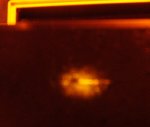I noticed a difference in beam color between my NL X-85 and my DX200 laser.
Under NL's sport elite goggles, the x85 dot appears green whereas the DX dot has a slight orange/yellow tinge to it.
Is this indicative of IR leakage from the DX laser? Any thoughts will be welcome. Or if anyone has a cni pen and a powerful enough DX laser, you can try to corroborate this observation. Or trying this out with a WL Fusion would be interesting as well.
Under NL's sport elite goggles, the x85 dot appears green whereas the DX dot has a slight orange/yellow tinge to it.
Is this indicative of IR leakage from the DX laser? Any thoughts will be welcome. Or if anyone has a cni pen and a powerful enough DX laser, you can try to corroborate this observation. Or trying this out with a WL Fusion would be interesting as well.







